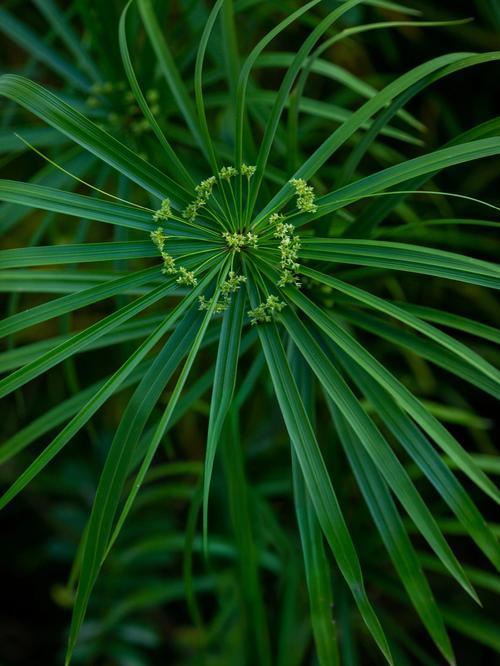Cyperus involucratus seed
Cyperus involucratus, commonly known as Umbrella Plant, Umbrella Papyrus, or Umbrella Sedge, is a tropical perennial sedge from the Cyperaceae family. Native to Madagascar, it has become a popular ornamental plant in many parts of the world due to its striking appearance, fast growth, and adaptability to wet conditions. Closely related to Cyperus alternifolius, this species is particularly admired for its umbrella-like whorls of leafy bracts atop tall stems.
Botanical Description
- Family: Cyperaceae
- Growth Habit: Clump-forming perennial, typically growing 1 to 1.5 meters tall.
- Stems: Tall, slender, green, and triangular in cross-section.
- Leaves: What appear to be leaves are actually leaf-like bracts forming an umbrella shape at the top of each stem.
- Flowers: Small and inconspicuous, found in the center of the bracts.
- Habitat: Grows best in marshy areas, ponds, stream banks, and wet containers; often found in both tropical and subtropical climates.
Uses and Applications
- Ornamental and Landscaping Use
- Water Gardens and Ponds: Due to its preference for wet soils, Cyperus involucratus is an ideal plant for margins of ponds, water features, and bog gardens.
- Indoor and Patio Decor: Often grown in containers for indoor use or patios, especially when placed in saucers of water to maintain constant moisture.
- Tropical Aesthetic: Its exotic shape and bright green foliage bring a lush, tropical look to landscapes and interiors.
- Erosion Control and Wetland Restoration
- Its dense root system helps stabilize soil along riverbanks and ponds, reducing erosion.
- Useful in constructed wetlands or biofiltration systems, where it assists in removing excess nutrients from wastewater or runoff.
- Ecological and Environmental Benefits
- Wildlife Habitat: Offers shelter for aquatic insects, frogs, and small animals near water bodies.
- Oxygenation: Helps improve oxygen levels in aquatic environments, especially in man-made ponds.
- Craft and Utility Use
- In some regions, species from the Cyperus genus (like Cyperus papyrus) have been used historically to make paper, mats, or baskets. While C. involucratus is not a primary craft species, its stems can be used for small weaving or decorative items.
Cultivation and Maintenance
- Light: Prefers full sun to partial shade.
- Water: Requires consistently moist or wet soil—can even grow in shallow water.
- Soil: Tolerates a wide range of soil types as long as moisture is abundant.
- Propagation: Easily propagated by division or from cuttings placed in water.
Invasiveness and Management
- In warm, wet climates, Cyperus involucratus can spread quickly and become invasive, especially in open waterways or unmanaged garden settings.
- It is important to manage its growth to prevent overcrowding and to avoid ecological disruption in non-native areas.
Caution
- Non-toxic: This plant is generally considered non-toxic to humans and pets.
- However, excessive spreading in natural ecosystems can pose a risk to native wetland vegetation if not controlled.
Conclusion
Cyperus involucratus is a versatile and visually striking plant that offers a wide range of ornamental, ecological, and practical benefits. Ideal for wet environments, it enhances the beauty of ponds and gardens while providing useful functions like erosion control and habitat creation. With its low maintenance needs and tropical charm, it is a favorite among gardeners, landscapers, and ecological restoration projects—though care should be taken to manage its spread in sensitive environments.
Cyperus involucratus: Uses, Applications, and Ecological Importance

